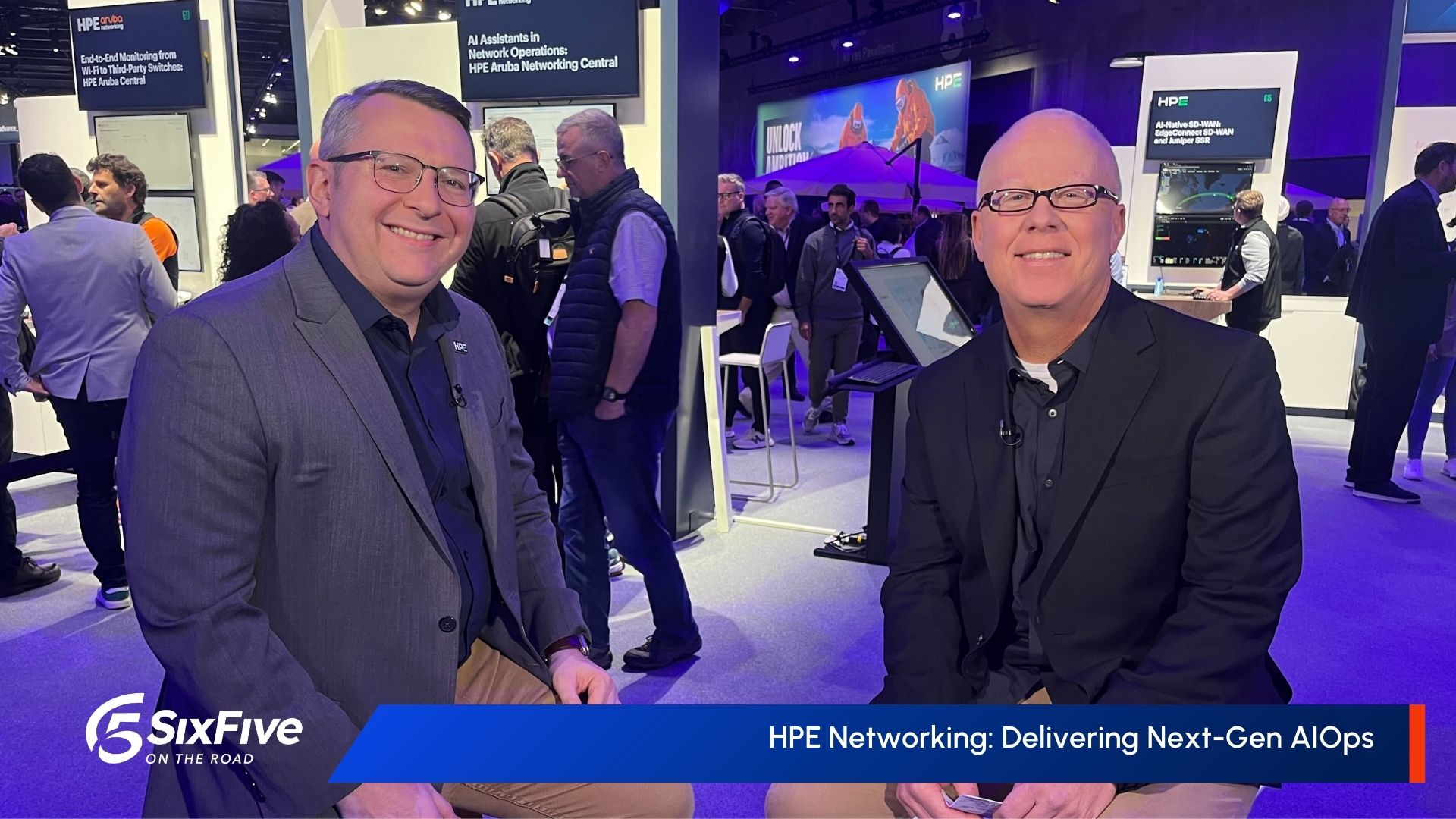VMware Explore 2025 General Session Live Recap with Paul Turner
Paul Turner, VP at Broadcom, joins Daniel Newman to recap VMware Explore 2025 highlights—covering Private AI, developer agility, cyber resilience, and strategic partnerships driving VMware Cloud Foundation innovation.
How are private cloud platforms evolving to meet enterprise needs for AI, developer agility, and cyber resilience?
At VMware Explore 2025, host Daniel Newman, CEO and Chief Analyst at The Futurum Group, is joined by Broadcom's Paul Turner, Vice President, VCF Products, for a conversation on customer momentum around VMware Cloud Foundation (VCF) and how Broadcom is influencing the next generation of private clouds by providing infrastructure at the speed of the developer, enabling Private AI as a Service, and advancing cyber resilient data strategies.
Key Takeaways Include:
Private AI: VMware Cloud Foundation (VCF) is emerging as a critical platform for Private AI, addressing security and data privacy concerns associated with public cloud solutions. New VCF subscription capabilities aim to simplify and reduce the cost of on-premises AI development and deployment.
Developer Agility and Control: Broadcom is prioritizing VCF enhancements to balance developer needs for agility with enterprise requirements for security and control. The strategy focuses on providing tools for rapid application development while ensuring IT and security teams can maintain governance and oversight.
Cyber Resilience: VMware Cloud Foundation is positioned as a secure and resilient foundation for highly regulated industries and critical workloads. The platform's security is built into its core, moving beyond basic compliance to focus on rapid recovery and business continuity in the face of cyber threats.
Strategic Alliances: Broadcom is expanding the VCF ecosystem through strategic collaborations with key partners like Canonical, NVIDIA, and AMD. These alliances are central to accelerating innovation, enhancing platform performance, and extending the capabilities of VCF environments for a range of new workloads, including AI.
Watch the full video at sixfivemedia.com, and be sure to subscribe to our YouTube channel, so you never miss an episode.
Or listen to the audio here:
Disclaimer: Six Five On The Road is for information and entertainment purposes only. Over the course of this webcast, we may talk about companies that are publicly traded, and we may even reference that fact and their equity share price, but please do not take anything that we say as a recommendation about what you should do with your investment dollars. We are not investment advisors, and we ask that you do not treat us as such.
Daniel Newman: Hey everyone. The Six Five is On The Road here in Las Vegas, Nevada at VMware Explorer 2025. We're coming off the big main stage session, general session here at the event. Great, great keynote. Hock Tan kicked it off and of course you're going to see that video out later. But this video is another one that I'm very excited about. One of the keynotes, the main stagers, Paul Turner, a regular. Now this is not your first time with us here on the Six Five. Join us to talk a little bit about all the announcements and you had a lot to share today.
Paul Turner: Yeah, it's actually really exciting if you just think about what we promised to deliver VCF9 a year ago on the same stage we delivered on that promise and customers are already seeing the results. I mean that's the first thing we were showing is just successful customer implementations and they're seeing the value as they kind of move to the private cloud because, you know, it gives them the security, gives them the privacy, gives them the control they need for their environment. But more importantly, we've got the ability now for IT operations to scale and manage environments with Fleet Lifecycle, with the ability to manage certificates and do central operations and monitoring. All of that was actually delivered in VCF9. So delivered on a promise and delivered a lot more today.
Daniel Newman: Yeah, Hock talked about those three friction points. You know, you had the developer versus it. You sort of broke that. Now they work together, no problem. You know, you had the speed and security challenges and of course that's one of the things that on prem and doing it, you know, in your data centers can actually offer a number of advantages. And the economics, of course, which we didn't quite get into those three friction points. And the third one, of course, upgrading the legacy, moving from the past to the future. So he hit on those, but you hit on a whole bunch of other things. And of course you did. You marched out some big customers, you flashed the big Walmart sign. But you also brought some customers to the table too that were maybe more relatable because not every company out there is the size of a Walmart.
Paul Turner: Right. They're not.
Daniel Newman: But it seems that they're sticking that nine out of ten number, the nine out of ten of the biggest. But you know, coming out of this deal, Paul, a lot of. There was a lot of speculation that that long tail would run away maybe, because Hawk kind of came out from the beginning and said we're going to really focus on platform. And it turns out that you are seeing customers move to the platform, but customers are also sticking with you and kind of moving at their own pace. It seems like a lot of good things are happening.
Paul Turner: Yeah, yeah. Well, if you, if you think about the company that we had on stage today, Grinnell, they're you know, kind of a relatively mid sized kind of company. They're out of the Midwest, but for them, they could actually scale. They don't have a large IT staff, very, very small IT staff. But you know, VCF actually gives them the ability to actually scale. The one security person doing all the security operations across their platform, all the enforcement and codification and ratification of their security profiles on their infrastructure is all done through VCF. So, you know, it's not just, you know, we trump out, you know, the Walmart of the world as you saw today. You know, the number one company who is committed to us on VCF. But it's not just for the big customers, it's for smaller customers too. And I will note we have not changed in terms of this being delivered anywhere. It's a private cloud, delivered in your data center, but also in a public cloud. So we're actually very. Worked very well with the hyperscalers. Worked very well. We actually just announced with AWS Platinum sponsor here, but actually just delivered a cloud as a service with their new EVS service. We have Oracle services, we've Google, we have Microsoft and all of our service providers, CSPs cloud service providers. So yeah, it's very exciting. But whether you want to run as a smaller company on a CSP hyperscaler cloud or whether you're running your own data center, it is not just for big enterprises.
Daniel Newman: There's a lot of this sort of zero sum, everything's going public cloud, no enterprise looks like that. Everything being on prem. Very few enterprises look like that anymore either.
Paul Turner: Right.
Daniel Newman: There's just too many reasons to use both. And I think the platform and what I like about (my analysts speak) is that there's really very little or no compromise. Meaning that the cloud has a lot of value, the public cloud, because it has all the services. Right. But with what you're building with VCF9, you're saying we do too. And of course the economics and the scale and other things talk just a little bit for the audience out there though about what the innovations were in 9.0 from I think it was 5.2 when you jumped to 9 is.
Paul Turner: Yeah, we jumped to 9. We jumped to 9.
Daniel Newman: We appreciate you skipping all those others.
Paul Turner: Numbers because we didn't really skip all the interim numbers, we just had to. We decided to follow the vSphere version numbering because it's what is more broadly known and so we just kind of followed suit with that. But you know, it's very important to actually note it is an upgrade for customers. It's not like rip and replace. I have to set up something new. No, this, they can get to it from their current environment, they just can upgrade its upgrade in place. All of that is very easy. But what is VC App 9? It helps their IT team scale. As I mentioned earlier, fleet management, life cycle, SERP management, all the things that were kind of a pain in the butt. But honestly for the IT admins we've really simplified in nine. But it's not just about that. It's also about the efficiency we can build off the platform we've always been known about. How can we drive more cost out of that hardware infrastructure? Right. How can we get more efficiency and more use of it? And we bring in memory tiering into nine. You know, memory is one of the most expensive resources as you look at bringing DDR5 memory. DDR5 memory is not cheaper than DDR4. It's more expensive. We can bring down the price. Right. And that's great because you load up a server with a terabyte of memory, you're paying a lot for that memory, half the cost of the server. We bring GPU efficiency, the ability for us to take a GPU resource and be able to kind of not just use that resource, slice that resource, so sub slice it, so you can actually use it for different parts of the application, be able to do non disruptive emotion. So now I can actually take DRS, move applications directly onto a pool of GPUs, dynamically manage those GPUs and move workloads around totally non disruptively to the AI applications that are running on top. PyTorch 70 billion parameter llama model and we can v motion it without any impact. So these are kind of the core, it's what we've always done, get the most efficiency out of hardware, we're getting the most efficiency out of CPUs, we're getting the most efficiency out of GPUs and we're getting the most efficiency out of memory, we get the most efficiency out of resource. So VSAM with global deduplication that we've added into it has so many features that we've actually put into nine.
Daniel Newman: Yeah. And you added support for amd. I saw, you know, you had Intel, you had a partnership, private AI with, with Nvidia, of course. I keep thinking about this inflection that's changing how IT teams work, it's changing how developers build. AI is a really important moment. And that was one of the things I heard from the keynote from you, from Hock, from the customers, because they're also having to align for private AI. A year ago you came out, you talked about private AI here at the event, but with VCF9, it seems that you've really worked to accelerate it. Just want you to double click because I heard a little bit on that last day you start kind of talking, just double click a little bit. Because I think if I'm a, you know, an ITDM right now, if I'm making a decision about what I'm buying and where I'm going to go and whether I'm going to platform, stay with VMware platform, move to the club. All the things I'm thinking a lot about AI because that's the board initiative, that's the imperative, that's what the boss is asking for.
Paul Turner: Yeah, yeah. Well, I think the key thing is that we weren't here today just to talk about what we have in VCF9. We're actually sharing where we're going roadmap wise and what's actually in development and actually ready for delivery very soon. So we think of the customers for sure. There's a lot of AI applications you need to deliver on public cloud and public cloud services, but your data is your data and as you drive, you know, kind of AI at scale within your enterprise and you look at improving your customer service, you look at improving your coding for code assistance for your engineers, you look at improving the legal documents and search and analysis, doing that with a very simple public model, doing final fine tuning and rag tuning all on top of VCF and incorporated into VCF is really powerful now. It's all free, included in the VCF license.
Daniel Newman: Yeah, that's a lot of expanded capability. I heard a lot both from the stage, a little bit. Even in the comments you've made so far about sort of developer autonomy. The idea that, you know, Hock said a lot when we were talking about how developers wanted to work versus how it wants to work. But I mean with what you're doing, you've added a little talk about the features and capabilities that have given that developer autonomy without creating that, you know. Yeah, typical friction that it would have with it.
Paul Turner: Well, and the typical friction we should understand the way IT organizations work today. It's not. It's understandable. As you look at an IT infrastructure, I have to actually deliver a platform for an application. I've got to deliver compute, storage, and networking. Those today are different teams inside and IT. What you need to do is actually separate the policy and how can I actually get and allow self service for IT organizations? So codification of those policies so that development teams can work independently of can optimize the infrastructure on the back end. They continuously tune, they can look at sharing GPUs as we just mentioned, but developers should be more autonomous and that's the key. So what have we done about that? We actually built a whole platform so that you can enter VCF so that you can do full code, we call it path to production. Being able to take piece of code, develop it, push all of that code into your git system, you know it's GitOps effectively take your git system, tie in CICD pipeline so that you actually take your application, you build your application, you do your test validation of your application, you push it into production. All of that is based on open source tools that developers want to use. We can do that because we've built a whole multi site, multi region kubernetes offering built into the platform. On top of that we've added capabilities so that you can function as a service. You can do container management, you've got all of the harbor registry service, you've got a Velero backup service, you've got Prometheus monitoring services. All the services you need for developers to actually build applications and run them on a platform are included. It's all part of what we call dsphere kubernetes service. And it gives you the simplest way to actually run agile applications. Because an IT organization they can now just make it available to those tenants and each of the tenants get their own resource view they get. You'll notice that today we shared all of those services that IT can make available to a developer. It's like going to a cloud, it's going to AWS. They see their databases that are available to them as a service, they see their Kubernetes service. They're able to set their firewall rules and settings, they're able to provision VMs or containers. All of that is actually there today in nine and what we were showing is actually really really powerful. So developers can push buttons, take applications, deliver it through a pipeline directly onto BCF. But in that an IT still gets to manage the controls, the policies and the governance rules. Because if they don't they'll break it, they'll break the company. You've got to have security and controls.
Daniel Newman: Well, and also the other thing that would happen is companies would have to invest in sandboxes. They'd have to put additional dollars because they couldn't use the environments they had, which.
Paul Turner: Well, too often that's. Too often that's what happens. Right. And it's kind of funny that people have, you know, kind of container and you know, container environments and I'll have my container application development environment and then I'll have my VM ecosystem and I'll keep them separate.
Daniel Newman: Yeah.
Paul Turner: And just think about the cost of that. That is crazy. I've got a whole set of infrastructure over here for running virtual machines. I've got a whole set of infrastructure to run containers. Why it's about running applications. You should have one infrastructure for actually running both. And so I think you're going to see those converge.
Daniel Newman: There's a bit of a theme on economics though here too is that it's always a theme. Right.
Paul Turner: But as VMware, that's the most important thing. I think it is, and it should be.
Daniel Newman: I think it is, and it should be. Let's talk about security for a minute. Just because of all of this, obviously you're bringing together network and you're bringing together the applications and you're bringing together studio compute, but you also have to bring security. That seems to be a big part of the story here when you have what, nine out of the 10 largest companies in the Fortune 500 as clients, have big security needs. You know, often they're in highly regulated industries.
Paul Turner: Yes.
Daniel Newman: Just talk a little bit about how you're elevating that concern. Because with the tailwind of AI, you also have the tailwind of opportunities for bad actors and vulnerability.
Paul Turner: Yeah, Well, I mean, we're here in Vegas at the moment and I don't know if you noticed the news over the weekend. I was a little surprised at it, but all the DMV offices have been shut down here for a week and it's been shut down because of a security threat and a security vulnerability in their IT systems. And they're trying to work out how to fix it and things like that. It's insane. The number of situations we're actually seeing security attacks into critical infrastructure is just increasing. It's not reducing. We've got to stop it. And stopping it, you know, VCF is a really good platform built in. You've got, you know, everything from identity management controls to role based security and access controls to Encryption in motion and at rest to ability for us to segment networks and isolate things from each other across the board. We built a great platform on security, but we didn't stop there. We extend that with some kind of operational security. With our ANS products, our advanced networking solutions, we can actually do the east west traffic management and firewall settings to actually keep traffic isolated from one another. One of the best ways to protect runtime networks. But with identity protection, IDS and IPS capabilities to actually look for security threats that are happening in the network as they happen. And then securing the developer pipeline which we do with our Tanzu team who actually are working on it because you've got to look at that developer pipeline and see how you secure that. So we just added the Advanced Cyber Compliance to VCF. So it builds on the VCF foundation they have and brings in the ability to do compliance and trust at scale. Because we've got our SALT capability to look at both application configuration and remediation of any issues there. It looks at infrastructure as well. We also look at how we help you build healthy environments. So for those secure compliant oriented industries, as you mentioned, we will actually go and audit and validate on a monthly basis to make sure that that is running correctly and we look for any particular faults. And of course if anything does go wrong, how do you recover from it quickly? Full VCDR which we call our data replication service. You know, ability to recover from any instance and to be able to analyze anything for cyber threats and recover back to an unaffected version of the product. So that's all included in the advanced Cyber VCF. Advanced Cyber Compliance. So I think for security industries we're taking it to a next premium level of security. You've got a great stable based platform with vcf. You've got operational network security with our firewall services and our IDS and IPS services. You have developer pipeline services to actually make sure that we don't have attacks in terms of the application pipeline, how you build applications, but you now have an assurance layer with the advanced Cyber compliance to look at. How do we make sure that you're running an optimal certified compliant environment and you can recover if things go wrong? All built into a very simple add on. So it's kind of cool.
Daniel Newman: So let's tie this together and bring it home. We talked a little bit earlier about the partnerships on the compute side, specifically Nvidia, AMD intel, but another one that you really called out, I think they got the room excited, you know, all the nerds and the Geeks. We're feeling good about this Canonical partnership. Talk about why, you know, kind of on that partnership strategy. Share a little bit more about the Canonical strategy and why you're really doubling down on that.
Paul Turner: Yeah, so, so I think, I think Canonical, I'm really thrilled actually with the partnership with Canonical. We're the number one platform as a cloud platform out there in the world that can work across any environment on prem public clouds service providers. But bring it together with the number one cloud OS in the world. It's the number one platform for running containers. You look at all the container environments, by far the majority of them are running in Ubuntu. Canonical Ubuntu, they are the delivery engine for open source Ubuntu. So we're taking it much further than that. Inside VCF, you're actually getting now full Ubuntu, this trusted container runtime that you want full support for it built into the VCF platform. Don't have to do any extra purchases or things. It includes support security updates. You get long term support for that as well. So you now have the most trusted and you've got this very scalable Kubernetes engine. You've now got the Canonical Ubuntu engine built into the platform too. And we built customized AI images, so it's very quick for you to actually deliver AI images because all of the GPU drivers and support are built into it as well. And then the other cool thing that we've announced with them is support for chisel containers. Now chisel container, this is where it gets really kind of geeky, but it's kind of cool if you think about what a container is. A container is a functional part of an application, but if it's only a small functional part of an application, it doesn't need all of the different libraries that are associated with a Linux operating system. So what you do with a chisel container is you actually remove all of the other crud that you don't need and you only keep around the absolute minimum kernel set that you need for running that container. So what have you just done there? You've actually dramatically reduced the security attack surface and you've actually built a very optimal container runtime and so all of that is supported. So you get to VCF, you don't just get VKS as an integrated system, you actually get all of this supported Canonical service and leading cloud platform. Nobody can look at this and say my application doesn't work on VKS. Your application already does. It's based on containers and it's based on Ubuntu containers under the covers.
Daniel Newman: Well, Paul, congratulations. That's what we like to call the big payload.
Paul Turner: Yeah. Yeah, it's kind of a lot. We went through that a lot.
Daniel Newman: And I appreciate you kind of going a little deeper and spending some time with me and have a great rest of your VMware Explorer 2025.
Paul Turner: No, thank you so much. And actually, yeah, great to catch up and I hope you enjoy it. I hope you get to see some of the sessions and get some of the new shoes and things like that. I don't have them on, but. But yeah, shoes are to come. If you do your certification or do you want more and more of those experts out there to be certified?
Daniel Newman: I'll do anything for shoes.
Paul Turner: You'll do anything for. Thank you so much and thank you.
Daniel Newman: Everybody for being part of this Six Five On The Road at VMware Explorer 2025 here in Las Vegas. Hit subscribe. Check out all the sessions that we did here at the event and of course, check out all the Six Five content. So much to learn here. But for this episode, for this show, it's time to say goodbye. See you all later.
MORE VIDEOS
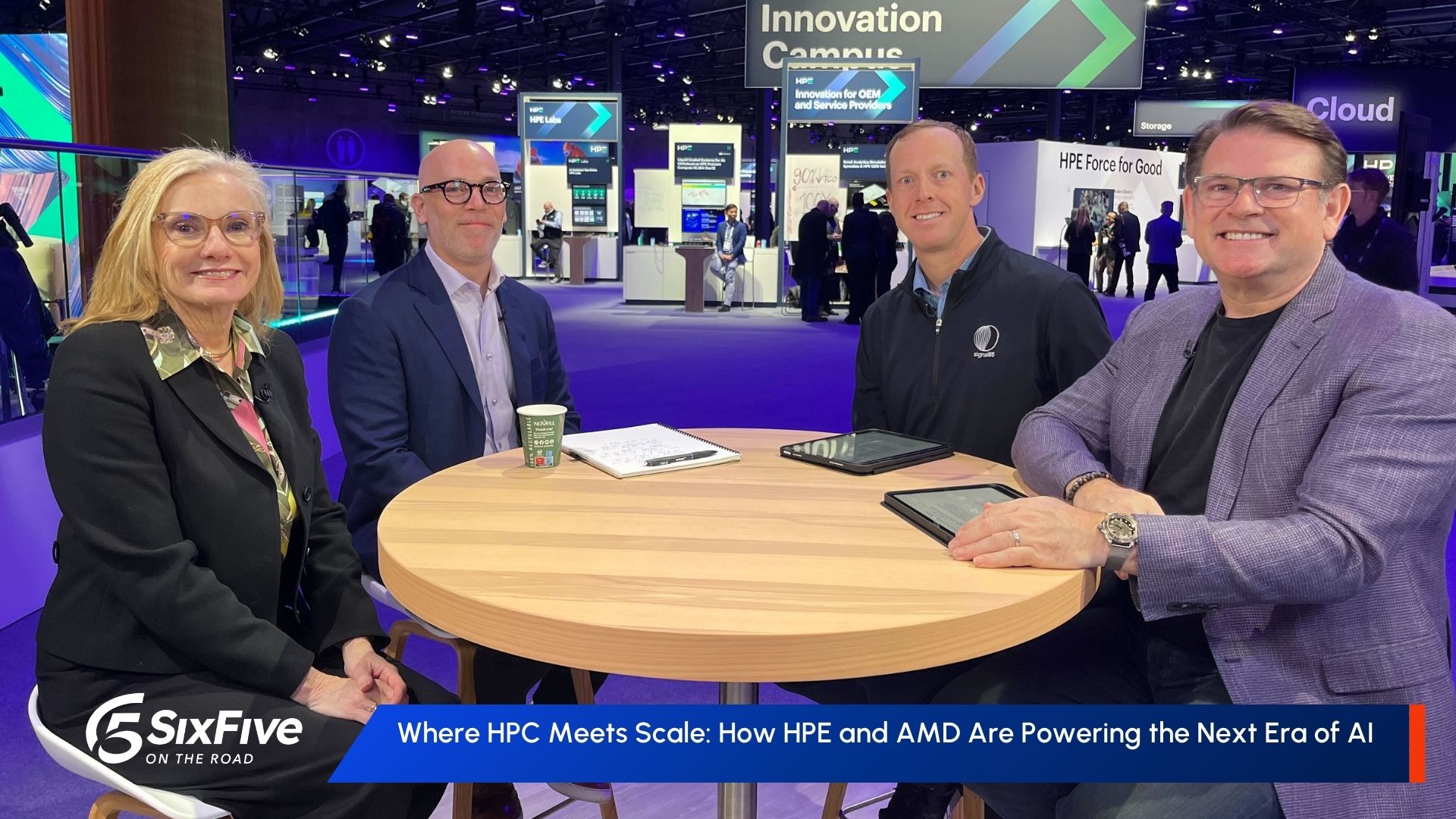
Where HPC Meets Scale: How HPE and AMD Are Powering the Next Era of AI – Six Five On The Road
Trish Damkroger of HPE and Safy Fishov of AMD join David Nicholson and Ryan Shrout to share insights into how the HPE–AMD partnership is driving HPC-class AI innovation via new platforms, sovereign AI initiatives, and rapid time-to-value for organizations.
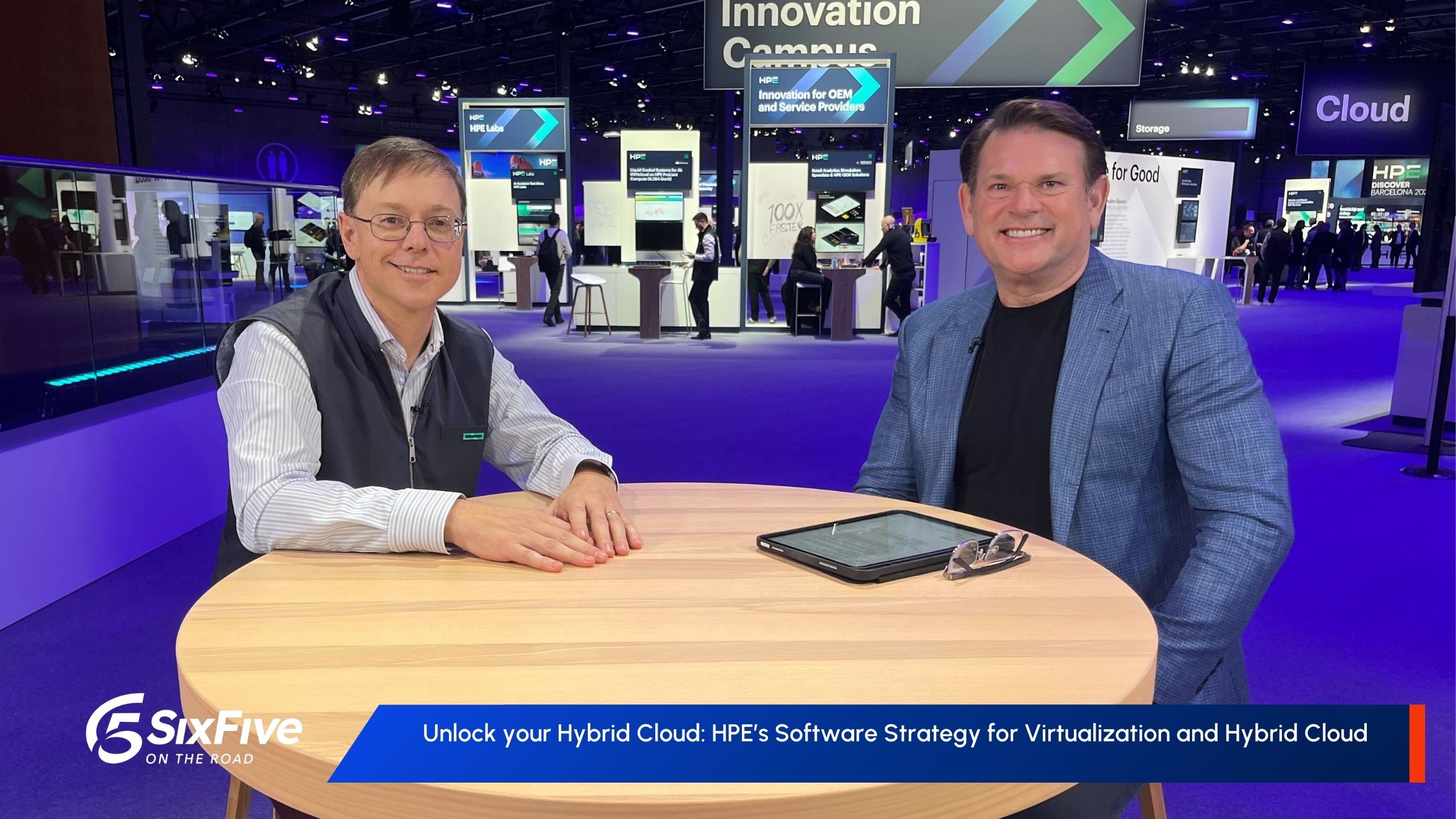
Unlock your Hybrid Cloud: HPE’s Software Strategy for Virtualization and Hybrid Cloud – Six Five In The Booth
Brad Parks, Chief Product / GTM Officer at HPE, joins David Nicholson to discuss HPE’s unified virtualization and hybrid cloud software strategy, Morpheus and CloudOps updates, and what’s next for VM Essentials and future integrations.
Other Categories
CYBERSECURITY
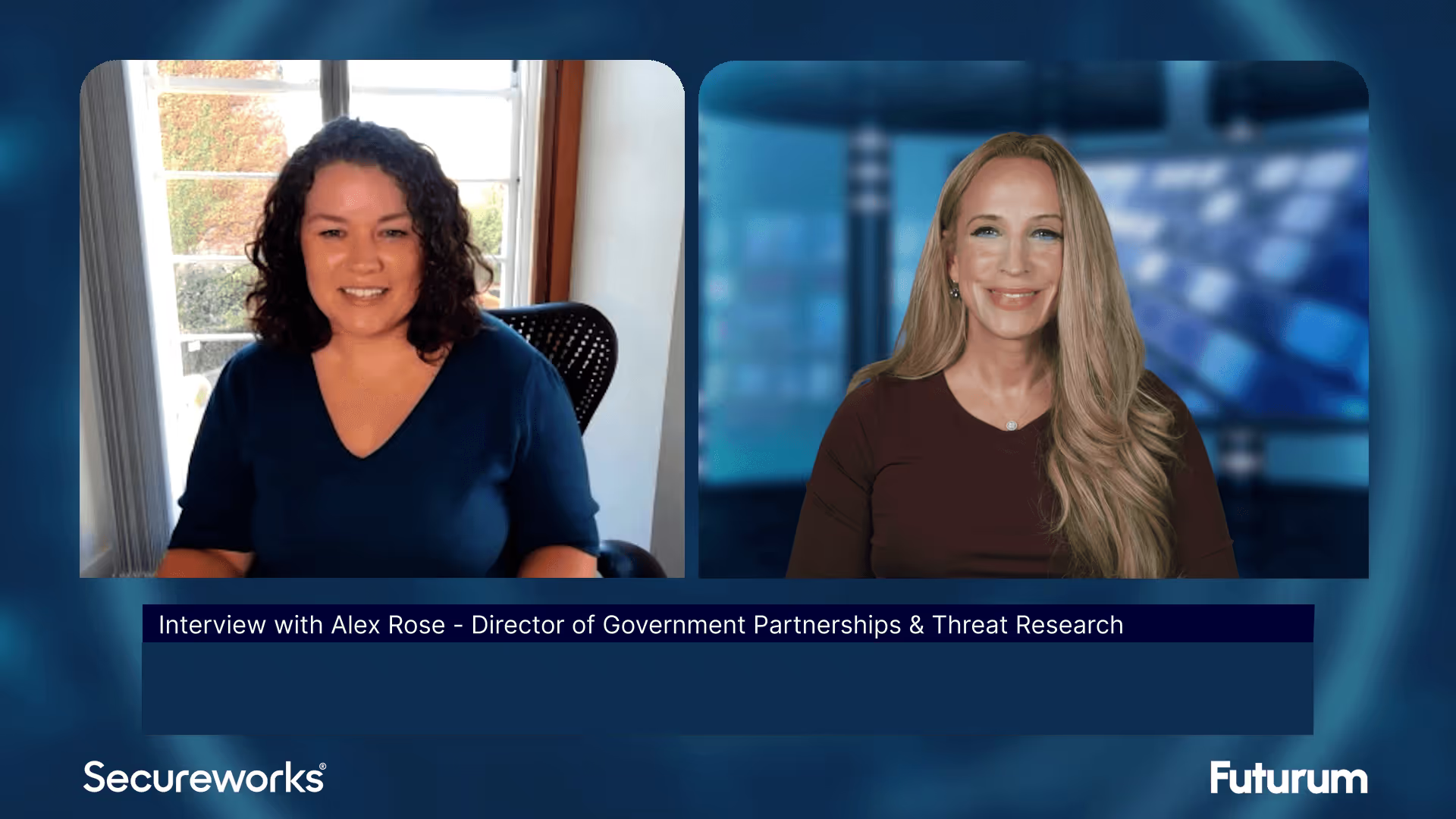
Threat Intelligence: Insights on Cybersecurity from Secureworks
Alex Rose from Secureworks joins Shira Rubinoff on the Cybersphere to share his insights on the critical role of threat intelligence in modern cybersecurity efforts, underscoring the importance of proactive, intelligence-driven defense mechanisms.
QUANTUM
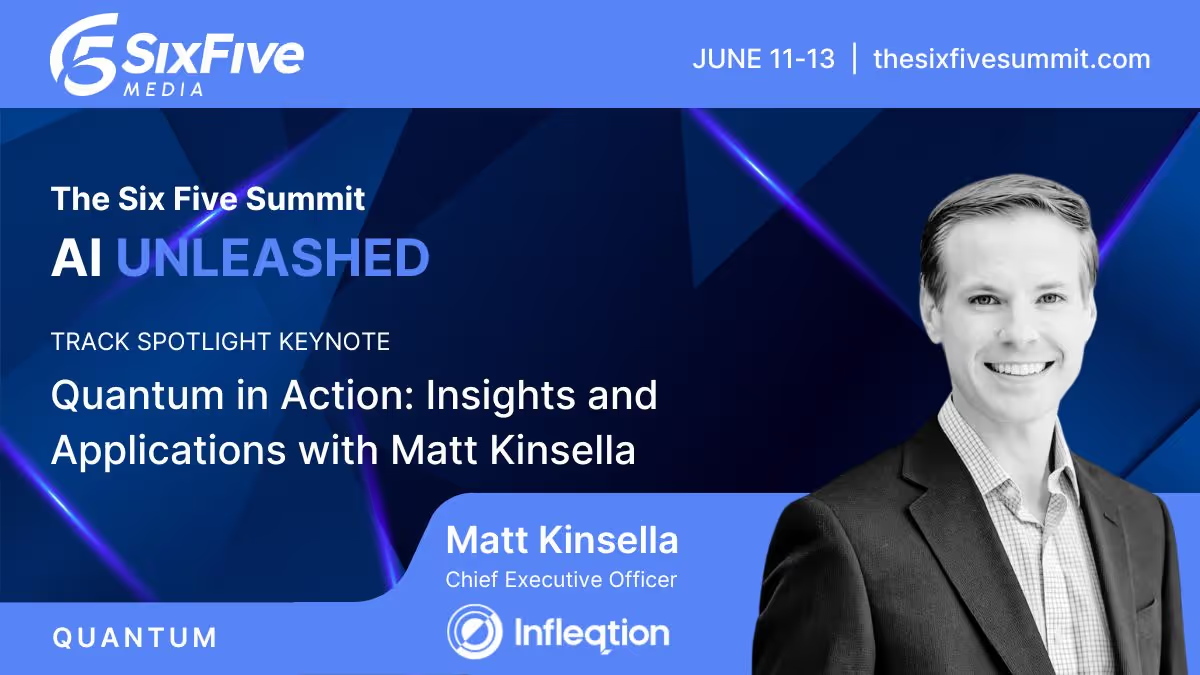
Quantum in Action: Insights and Applications with Matt Kinsella
Quantum is no longer a technology of the future; the quantum opportunity is here now. During this keynote conversation, Infleqtion CEO, Matt Kinsella will explore the latest quantum developments and how organizations can best leverage quantum to their advantage.
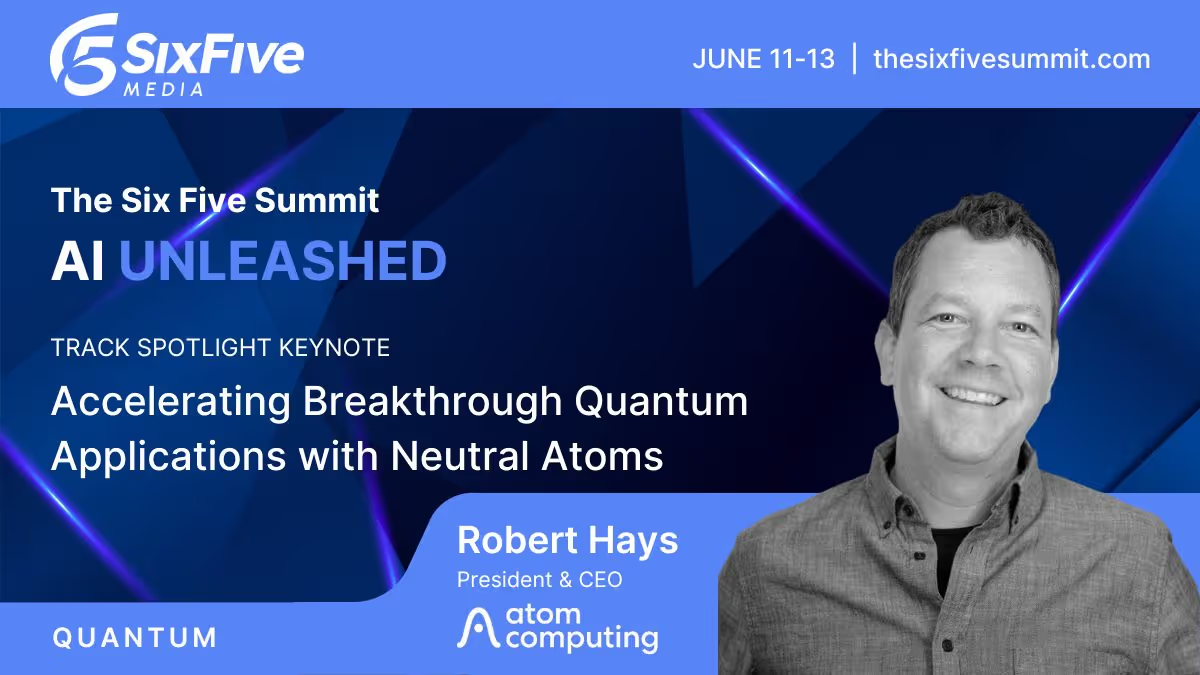
Accelerating Breakthrough Quantum Applications with Neutral Atoms
Our planet needs major breakthroughs for a more sustainable future and quantum computing promises to provide a path to new solutions in a variety of industry segments. This talk will explore what it takes for quantum computers to be able to solve these significant computational challenges, and will show that the timeline to addressing valuable applications may be sooner than previously thought.



